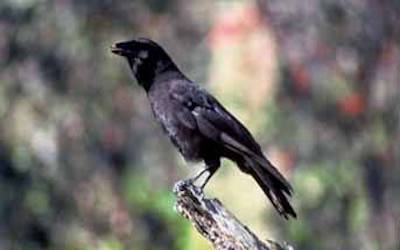PTE考生目前最大的问题之一就是练习题缺乏。除了有限的基本官方书(PLUS,Testbuilder, OG)之外就没有题了。很多英语基础不是很扎实的同学很难找到练习材料。悉尼文波雅思PTE培训学校专门为澳洲,尤其是悉尼、墨尔本的PTE考生准备了适合PTE听力阅读练习的科学60秒。各位PTE同学可以练习PTE听力中的summarise spoken text和PTE口语中的retell lecture,PTE听力口语-科学60秒-Frosty Moss练习记笔记技巧和复述。废话少说,下面开始:
听力内容:
60秒科学节目(SSS)是科学美国人网站的一套广播栏目,英文名称:Scientific American – 60 Second Science,节目内容以科学报道为主,节目仅一分钟的时间,主要对当今的科学技术新发展作以简明、通俗的介绍,对于科学的发展如何影响人们的生活环境、健康状况及科学技术,提供了大量简明易懂的阐释。
This is Scientific American — 60-Second Science. I’m Jason Goldman.
Got a minute?
Once upon a time, on the big island of Hawaii, it would not have been unusual to hear:
[wild Hawaiian crow call]
That’s the call of the Hawaiian crow. It’s is a critically endangered species, now extinct in the wild after decades of habitat loss, persecution by farmers, and invasive diseases. In the mid-1990s, wildlife biologists rounded up the few surviving crows and put them into a captive breeding program. Today, Hawaiians can once again hear the calls of more than one hundred Hawaiian crows – or ‘alalā, as it is called there – but only in aviaries.
[aviary crow call]
Researchers once focused their efforts primarily on breeding and husbandry. But now they need to know more.
“And now that they are doing so well, and it’s at the point where they could be in the wild again, now we can look at their vocalizations and their behaviors and things like that.”
University of Hawaii bioacoustics researcher Ann Tanimoto. Those other aspects—culture, if you will—are critical for a species as socially complex as the ‘alalā.
Tanimoto and her team made recordings of captive-bred ‘alalā pairs at the Keauhou Bird Conservation Center in Volcano, Hawaii, and compared them to recordings made in the early 1990s by Fish and Wildlife Service biologists of the last few wild pairs.
“The wild have more, almost double the number of alarm calls, than the aviary ‘alalā do. And they also have these really cool territorial broadcast calls they do in the wild
[Wild territorial call]
that weren’t found in captivity.”
The absence of the territorial call in captivity makes good sense, because captive birds have different territory demands than wild ones. It also makes sense that they would have fewer alarm calls, because captive birds don’t experience the threat of predation. The study was published in the journal Animal Behaviour.
“So we think that their vocalizations that are similar, aviary and wild, are more innate, so basically naturally inside of them. And those that differ are socially learned by being passed on generation to generation.”
So what happens when the captive-bred birds are released? They won’t have the luxury of learning these calls from their ancestors.
“It will definitely be interesting to determine if they will begin vocalizing something similar to those that they used in the wild before, or if they will begin vocalizing call types that are completely different than those that were in the wild previously.”
In Hawaiian mythology, the ‘alalā are thought to lead souls to their final resting place near the Ka Lae volcano. With luck, scientists can help the rare species avoid their own journey to Ka Lae.
Thanks for listening for Scientific American — 60-Second Science Science. I’m Jason Goldman.
墨尔本悉尼文波PTE原创首发
更多精彩请持续关注微信wenbo_tv3。





